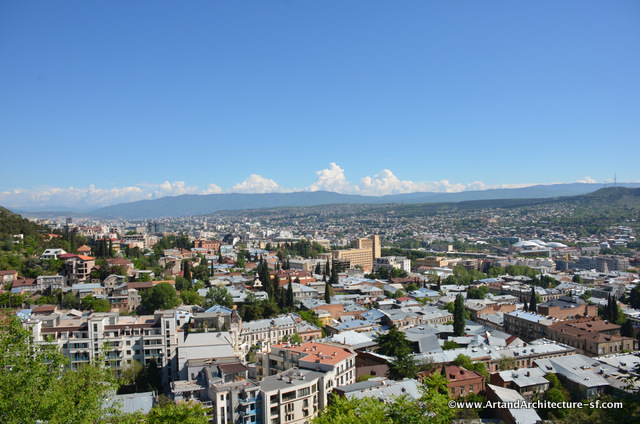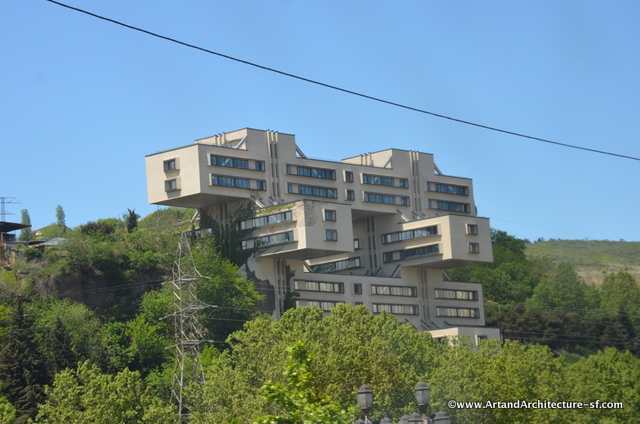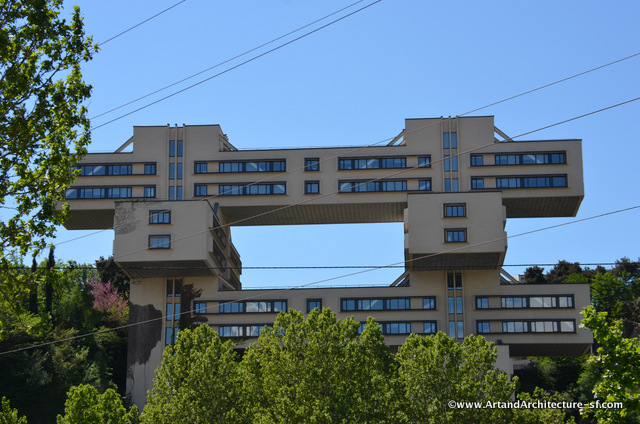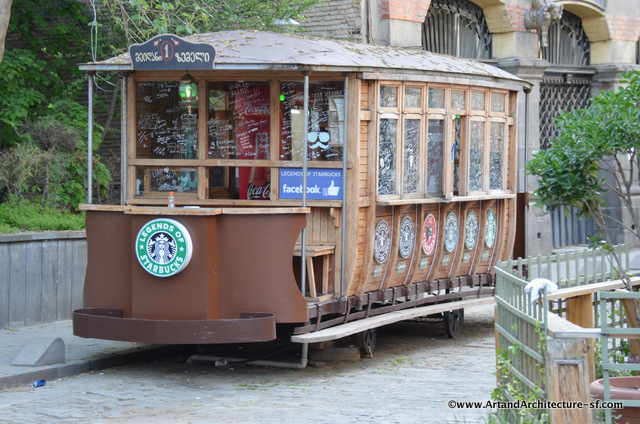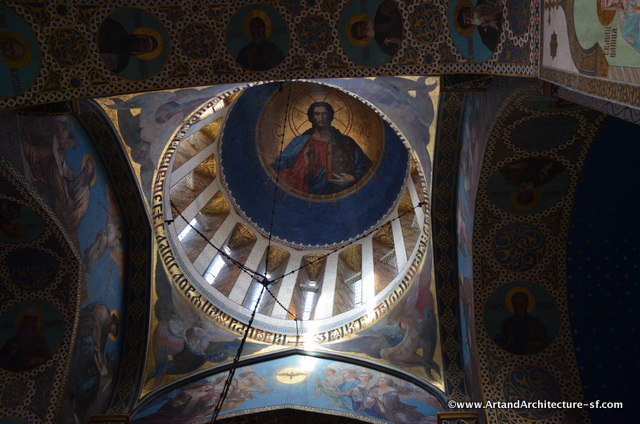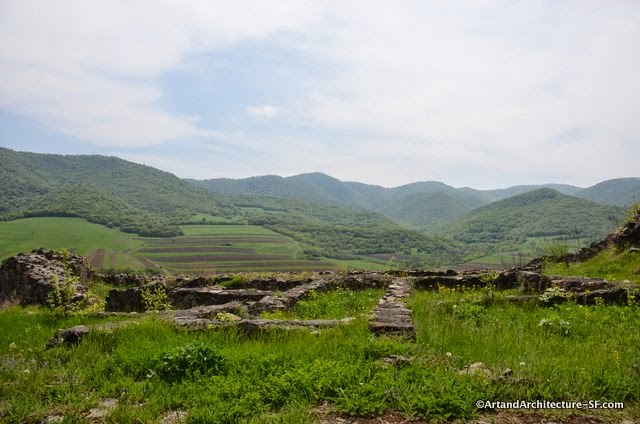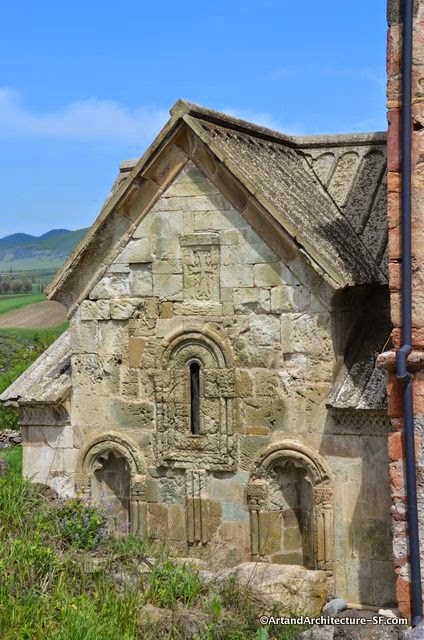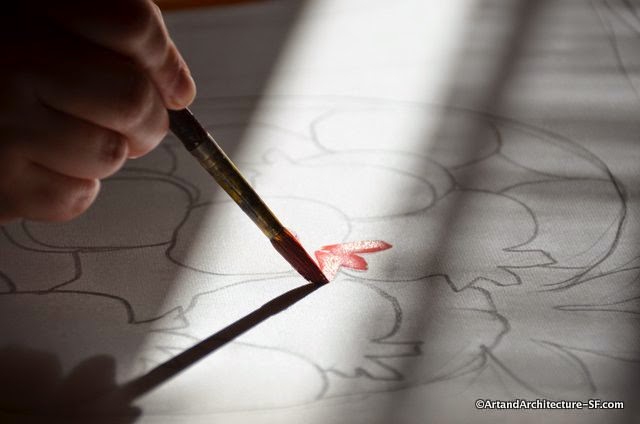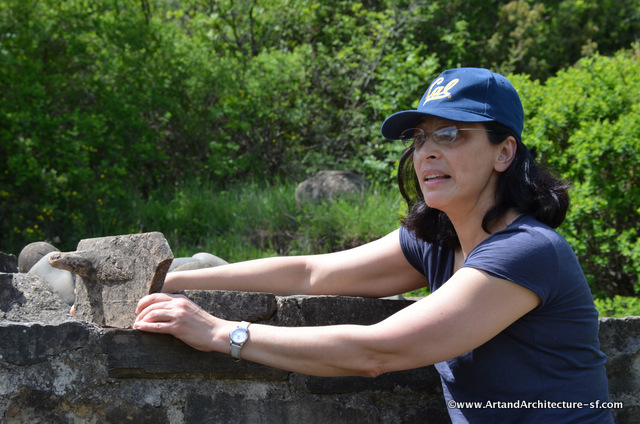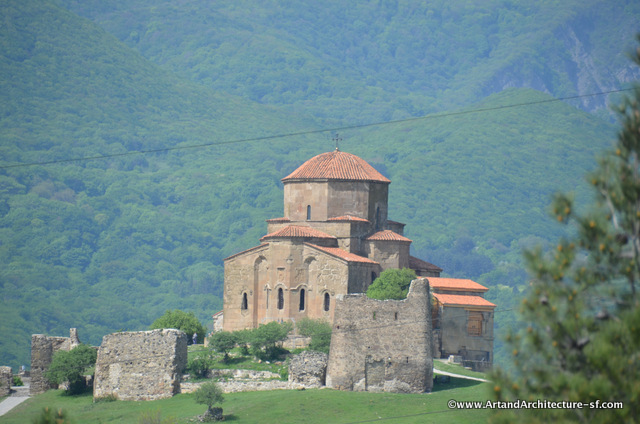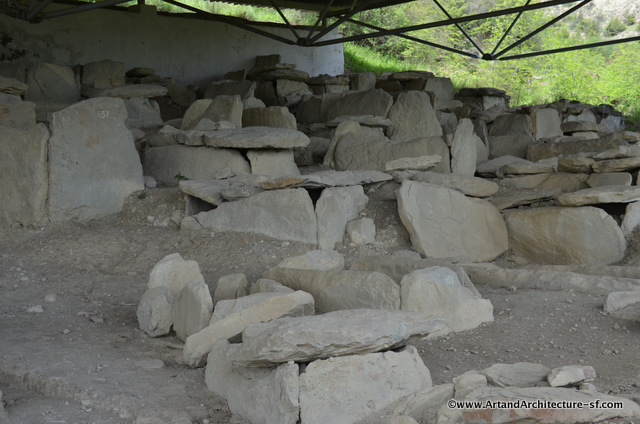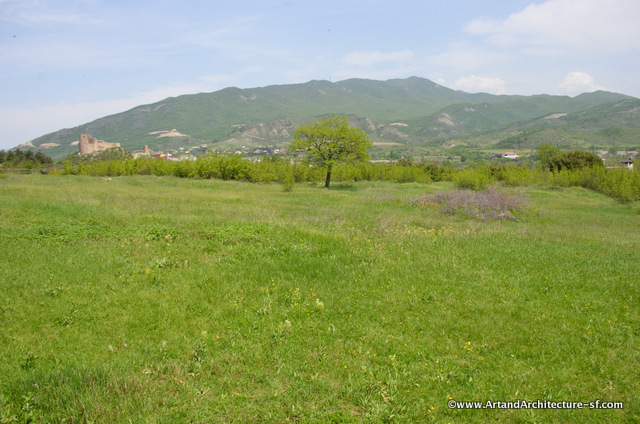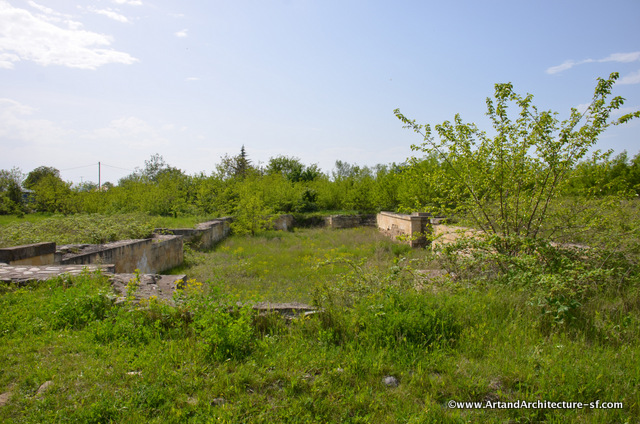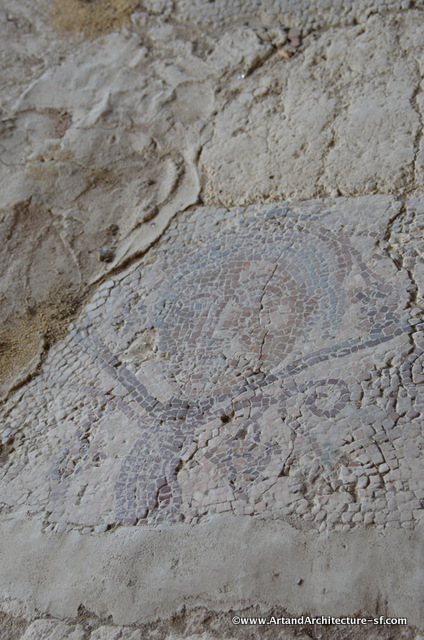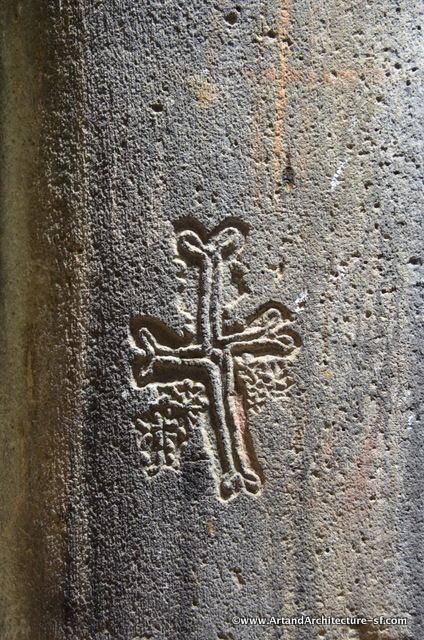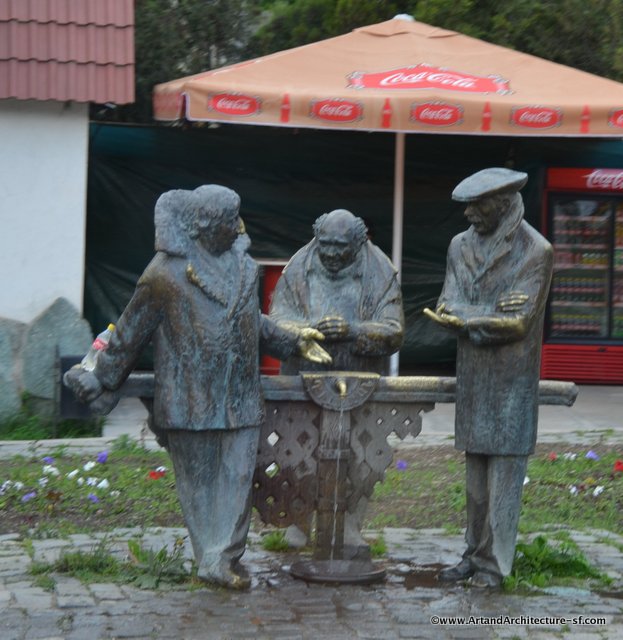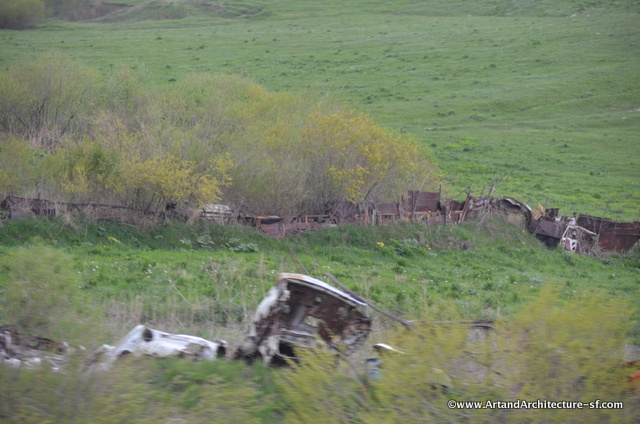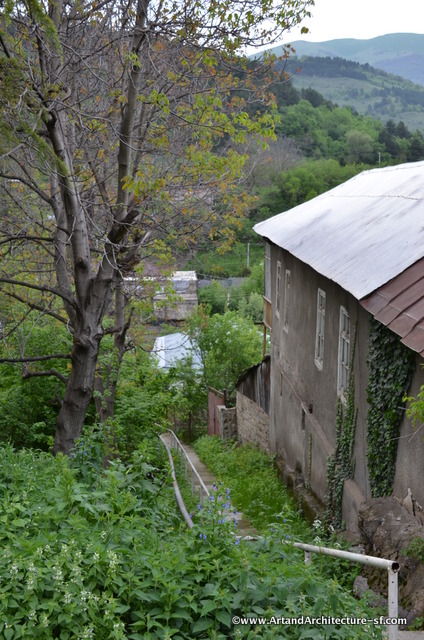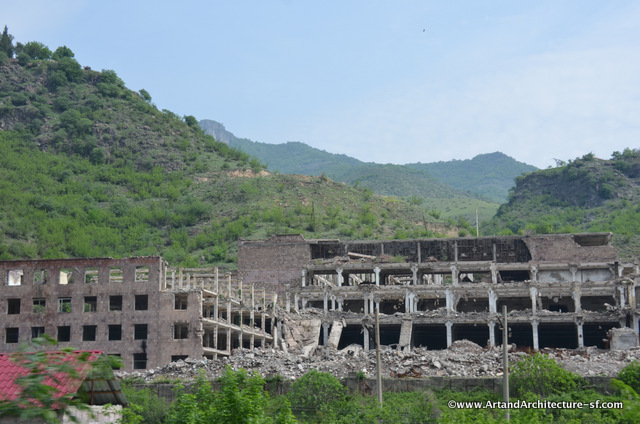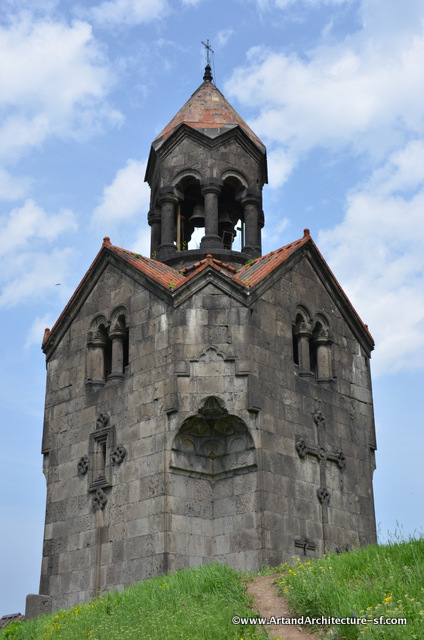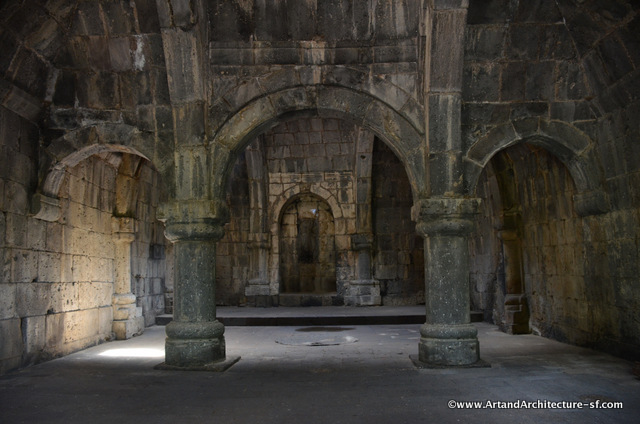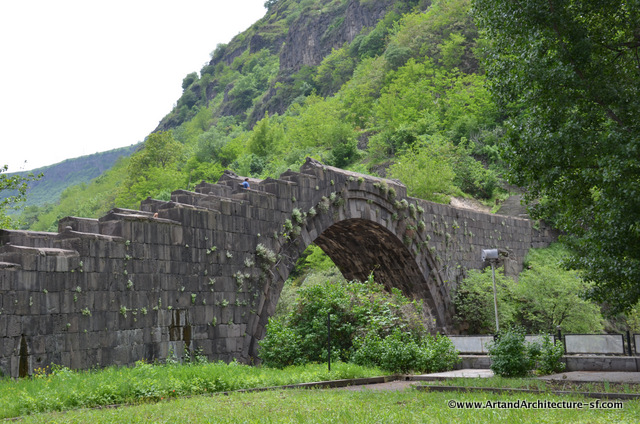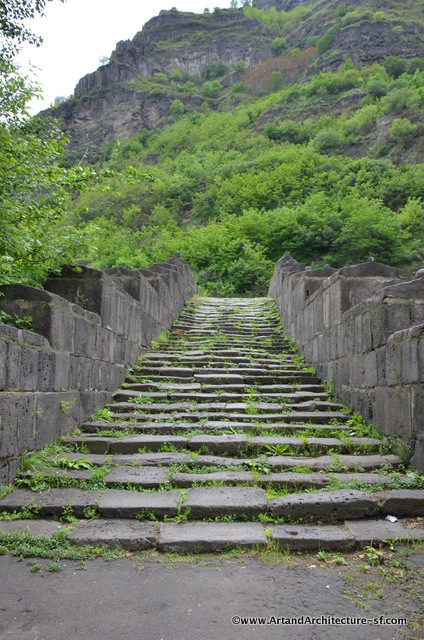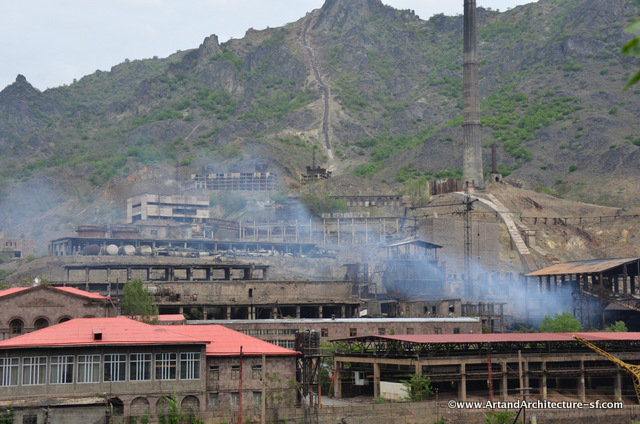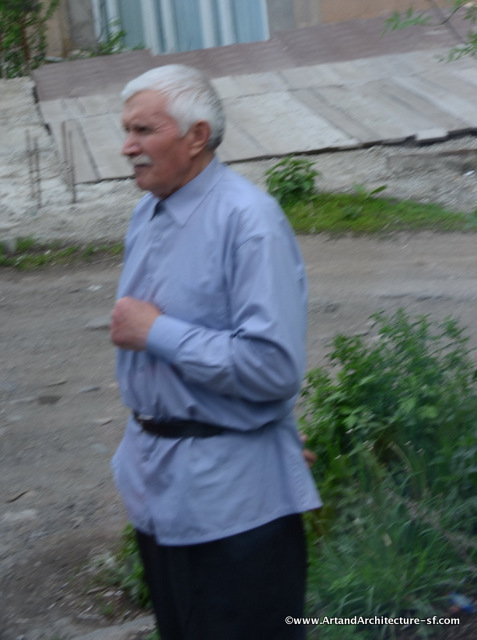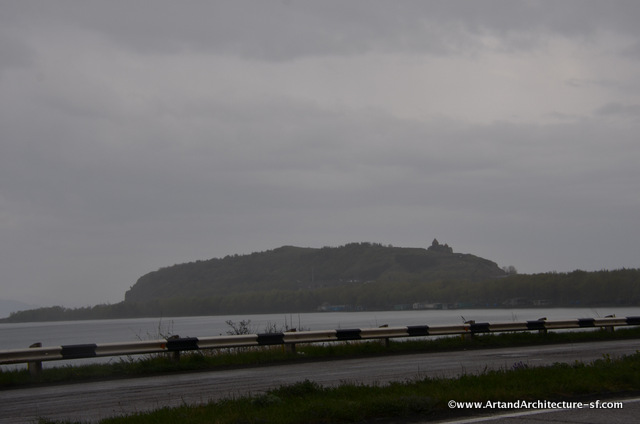And the entire town is looked over by Kartlis Deda created by sculptor Elguja Amashukeli. This sixty foot tall aluminium figure is of a woman in Georgian national dress. She symbolizes the Georgian national character: in her left hand she holds a bowl of wine to greet those who come as friends, and in her right hand is a sword for those who come as enemies
 We headed out of town to Dmanisi. Dmanisi is a medieval town overlooking the confluence of two rivers where Silk Road caravans used to pass. Early human fossils, originally named Homo georgicus and now considered Homo erectus georgicus, were found at Dmanisi between 1991 and 2005. At 1.8 million years old, they represent the earliest known human presence in the Caucasus, and the oldest outside of Africa.
We headed out of town to Dmanisi. Dmanisi is a medieval town overlooking the confluence of two rivers where Silk Road caravans used to pass. Early human fossils, originally named Homo georgicus and now considered Homo erectus georgicus, were found at Dmanisi between 1991 and 2005. At 1.8 million years old, they represent the earliest known human presence in the Caucasus, and the oldest outside of Africa.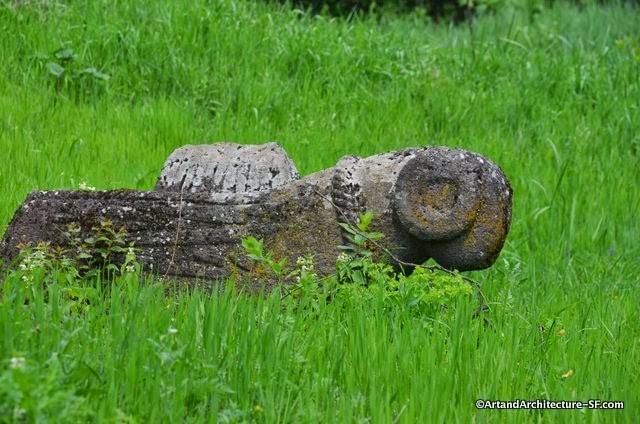 We then meandered down to Bolnisi, long the seat of a bishop or archbishop, and the home of the oldest dated Christian structure in Georgia. It is known as Bolnisi Sioni (Sioni being Georgian for Zion and a designation used by many of their churches). This three-nave basilica church dates to the 5th century AD and features some pagan elements in its stonework. The original roof is missing but has been replaced with a modern covering.
We then meandered down to Bolnisi, long the seat of a bishop or archbishop, and the home of the oldest dated Christian structure in Georgia. It is known as Bolnisi Sioni (Sioni being Georgian for Zion and a designation used by many of their churches). This three-nave basilica church dates to the 5th century AD and features some pagan elements in its stonework. The original roof is missing but has been replaced with a modern covering.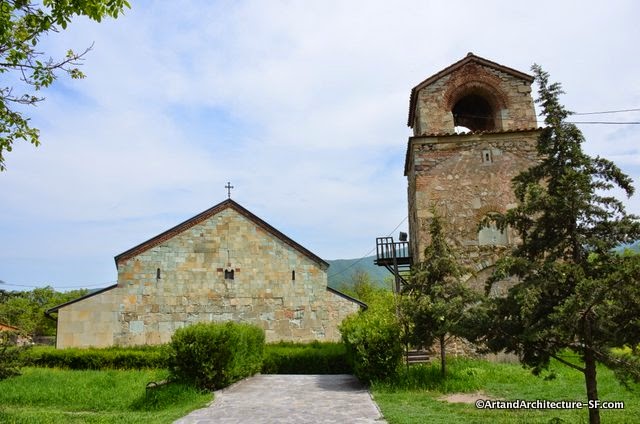 We ended the day with a visit to a five female art co-operative that does batik and silk painting. Of course, I was in heaven. Delightful studio space in an old home, and two really beautiful working women to show us around. The studio is called La Maisono Bleue and is at 94 Barnov in Tblisi.
We ended the day with a visit to a five female art co-operative that does batik and silk painting. Of course, I was in heaven. Delightful studio space in an old home, and two really beautiful working women to show us around. The studio is called La Maisono Bleue and is at 94 Barnov in Tblisi.May 2014
We began our day heading straight out of Tblisi to Kutaisi. Today was an entire day of archaeological sites and a very, very long day in the bus, so not too many photographs.
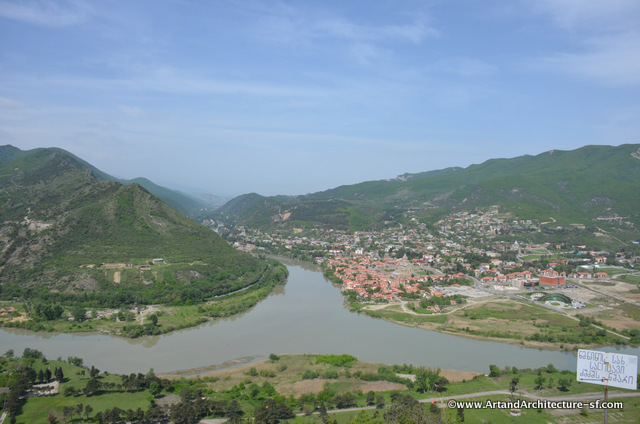 This is an archaeological group and our visiting professor is Gocha Tsetskhladze, who is Georgian, studied at Oxford, was there during the breakup of the Soviet Union, thus becoming stateless and now teaches in Melbourne.
This is an archaeological group and our visiting professor is Gocha Tsetskhladze, who is Georgian, studied at Oxford, was there during the breakup of the Soviet Union, thus becoming stateless and now teaches in Melbourne.
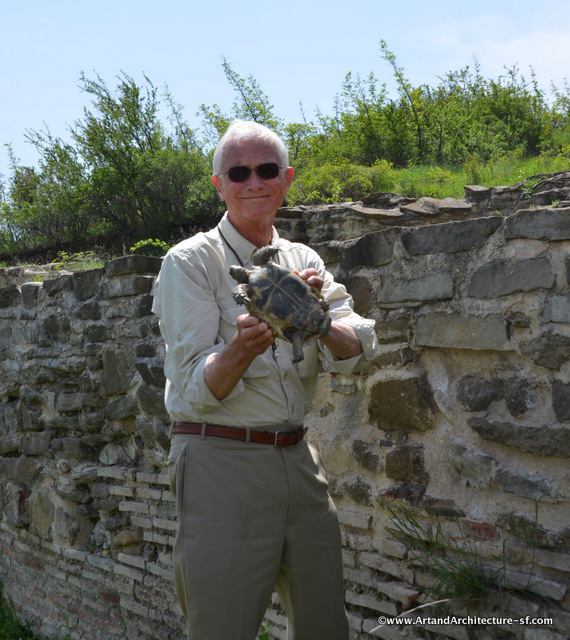 The other form of archaeology they have here is Pipeline Archeology. When the pipeline was dug between the oil producing country of Azerbaijan through Georgia the oil company was given 5 meters on both sides of the pipeline to dig. The archaeologists were right there with them. They found thousands upon thousand of items. The down side of this was that it showed them how rich a site it was, but they couldn’t dig further than the 10 meters in width. While anyone can understand the frustration, I would assume that the lack of dollars to do a decent dig would have put an end to the entire venture anyway. They did however publish three volumes regarding what they found.
The other form of archaeology they have here is Pipeline Archeology. When the pipeline was dug between the oil producing country of Azerbaijan through Georgia the oil company was given 5 meters on both sides of the pipeline to dig. The archaeologists were right there with them. They found thousands upon thousand of items. The down side of this was that it showed them how rich a site it was, but they couldn’t dig further than the 10 meters in width. While anyone can understand the frustration, I would assume that the lack of dollars to do a decent dig would have put an end to the entire venture anyway. They did however publish three volumes regarding what they found.*
After an interesting night at Lali’s Guesthouse our first stop was just down the road at Bagrati Cathedral.
Bagrati Cathedral is an interesting study in the rights, wrongs, ups, downs and political meddling’s of historic restoration.
The Gelati Monastery was founded by King David the Builder in 1106. This architectural complex housed Georgia’s first academy as well as the monastery.
Today was a fascinating day. Not just for what we saw but how long it took for us to get to where we were going. We were approximately 3 hours away from our destination. What this says is there are literally no places to stay in Georgia. The hotel we are staying at in the ski resort is as close a hotel as we could get to the part of Georgia we were visiting. There just aren’t hotels that are acceptable for the average American.
This says so much about the situation in this country. I am not knocking it, it is just an interesting observation about their economy.
We traveled all of this way to visit Vardzia. Vardzia is the site of the most famous cave-city in Georgia, which, largely because of its connections with Queen Tamar, is a place of almost mythic importance for most Georgians. It was in a closed border zone throughout the Soviet period, making it even more mythical than it might have actually been. It is said that its name derives from Ak Var Dzia or “Here I am, uncle” Tamar’s call when lost in the caves.
First established by King George III in 1156 and consecrated in 1185, his daughter Tamar made it into a monastery, which became the chief seminary of southwestern Georgia housing 2,000 monks until an earthquake ruined it in 1283, slicing away a large portion of the rock face. Another quake in 1456 was followed by a Persian army in the mid 1500’s and the Turks at the end of the century so that now around 600 chambers survive from a total of 3,000. These originally included stables, barracks, bakeries wine presses and stores.
The area still has a working monastery and chapel and exquisite frescoes outside of the chapel.
Only about one half of the original 13 levels remain that penetrated 54 yards in to the cliffs. The area has been protected since 1938. Heavy rain in 1998, caused a large section of cliff to collapse and the Dutch and US governments quickly came to the aid with money for repairs. It is said that Egyptian vultures nesting in the caves are making the management even more complex.
Our drive was through interesting countryside. I think it best to just post a few photographs and let everyone take from them what they would.
Both this house and this apartment complex were typical of what we saw in most every town.
Today we had a 2 and 1/2 hour drive out of Tblisi. Our destination was the David Gareja Monastery complex.
*
*





